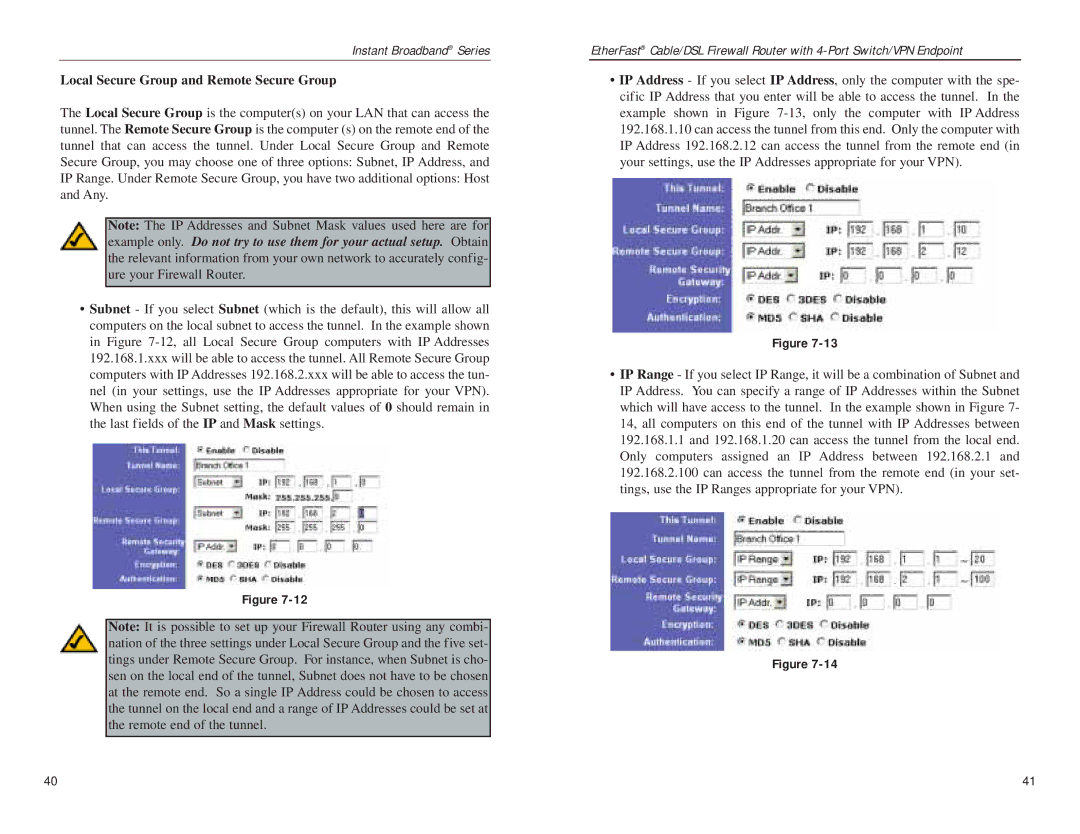
Instant Broadband® Series
Local Secure Group and Remote Secure Group
The Local Secure Group is the computer(s) on your LAN that can access the tunnel. The Remote Secure Group is the computer (s) on the remote end of the tunnel that can access the tunnel. Under Local Secure Group and Remote Secure Group, you may choose one of three options: Subnet, IP Address, and IP Range. Under Remote Secure Group, you have two additional options: Host and Any.
Note: The IP Addresses and Subnet Mask values used here are for example only. Do not try to use them for your actual setup. Obtain the relevant information from your own network to accurately config- ure your Firewall Router.
•Subnet - If you select Subnet (which is the default), this will allow all computers on the local subnet to access the tunnel. In the example shown in Figure
Figure
Note: It is possible to set up your Firewall Router using any combi- nation of the three settings under Local Secure Group and the five set- tings under Remote Secure Group. For instance, when Subnet is cho- sen on the local end of the tunnel, Subnet does not have to be chosen at the remote end. So a single IP Address could be chosen to access the tunnel on the local end and a range of IP Addresses could be set at the remote end of the tunnel.
EtherFast® Cable/DSL Firewall Router with
•IP Address - If you select IP Address, only the computer with the spe- cific IP Address that you enter will be able to access the tunnel. In the example shown in Figure
Figure
•IP Range - If you select IP Range, it will be a combination of Subnet and IP Address. You can specify a range of IP Addresses within the Subnet which will have access to the tunnel. In the example shown in Figure 7- 14, all computers on this end of the tunnel with IP Addresses between 192.168.1.1 and 192.168.1.20 can access the tunnel from the local end. Only computers assigned an IP Address between 192.168.2.1 and 192.168.2.100 can access the tunnel from the remote end (in your set- tings, use the IP Ranges appropriate for your VPN).
Figure
40 | 41 |
